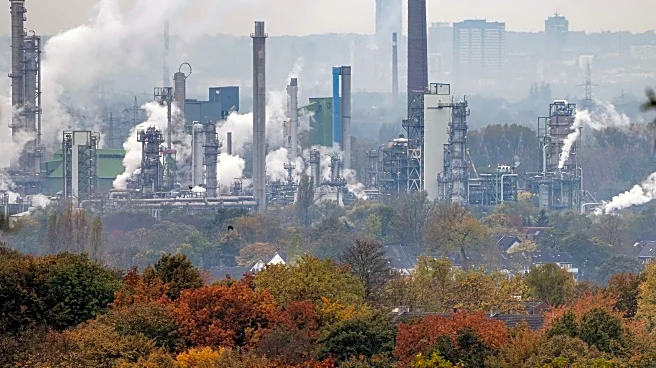What's Happening?
Recent research conducted by Cranfield University, published in Nature Climate Change, has highlighted the significant impact of Artificial Light At Night (ALAN) on global carbon balance. The study utilized
satellite data and 86 carbon flux monitoring sites across continents to demonstrate that ALAN increases ecosystem respiration, leading to a greater release of carbon from plants, microbes, and animals. This increase in carbon release is not matched by a proportional rise in photosynthesis, resulting in diminished carbon storage within affected ecosystems. The findings suggest that ALAN, which affects approximately a quarter of Earth's land surface, is a readily reversible stressor that significantly shifts the global carbon balance.
Why It's Important?
The implications of this study are profound for climate models and global carbon budgets. Light pollution, which increases by about 2 percent annually, is currently omitted from most climate models. The research indicates that ALAN could subtly but significantly alter the global carbon balance if left unaddressed. This is particularly concerning given the growing footprint of artificial illumination at night. Addressing light pollution could represent a rare opportunity for a win-win-win scenario, benefiting the environment, energy efficiency, and human wellbeing. The study advocates for the adoption of dimmable, directional, and spectrally sensitive lighting technologies as immediate and achievable improvements.
What's Next?
The Cranfield University team is calling for changes in climate models to include the effects of light pollution. They emphasize that unlike many other global climate stressors, light pollution is easily reversible. By implementing better lighting design, such as dimmable and directional lighting, the negative impacts of ALAN can be mitigated almost overnight. This approach not only addresses environmental concerns but also improves energy efficiency and human health, as excessive nighttime light has been linked to negative effects on human health.
Beyond the Headlines
The study underscores the hidden impacts of light pollution on ecosystems, disrupting energy flows, animal behavior, habitats, and natural patterns. It highlights the need for increased awareness and action at local, state, and national levels to reduce this growing threat. The research suggests that tackling light pollution could lead to significant improvements in environmental health and energy efficiency, presenting a unique opportunity for positive change.












